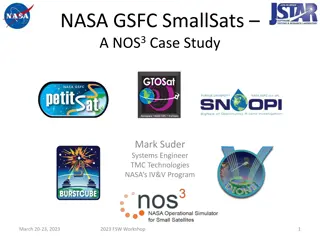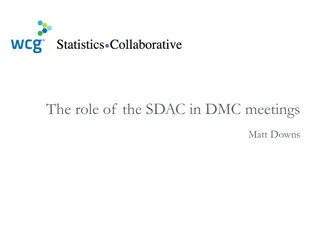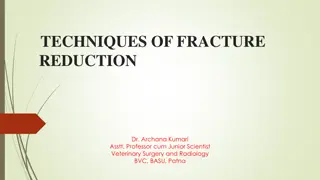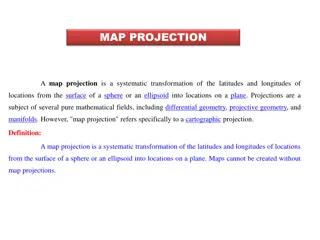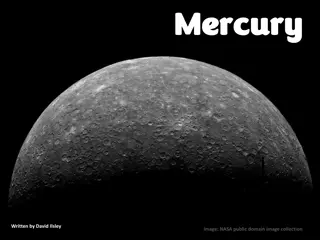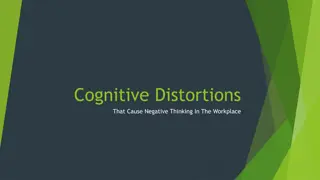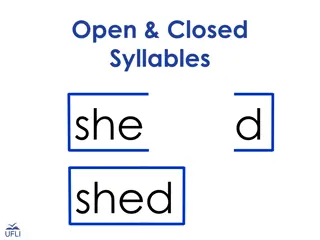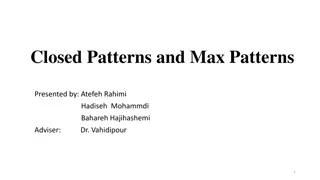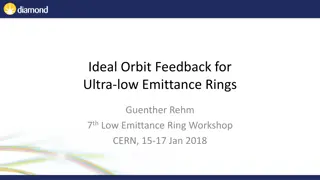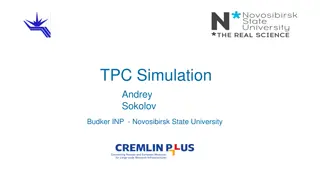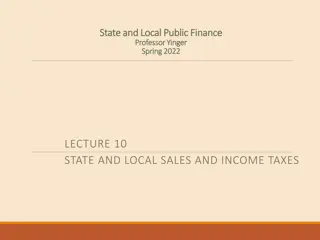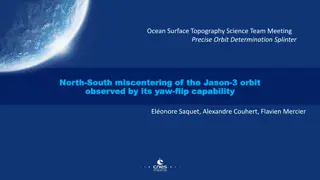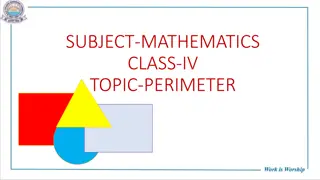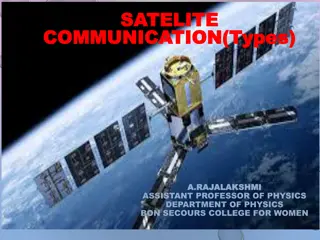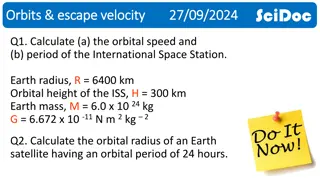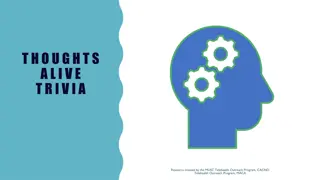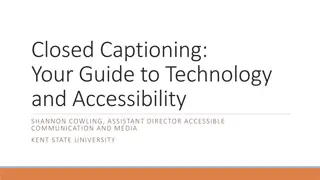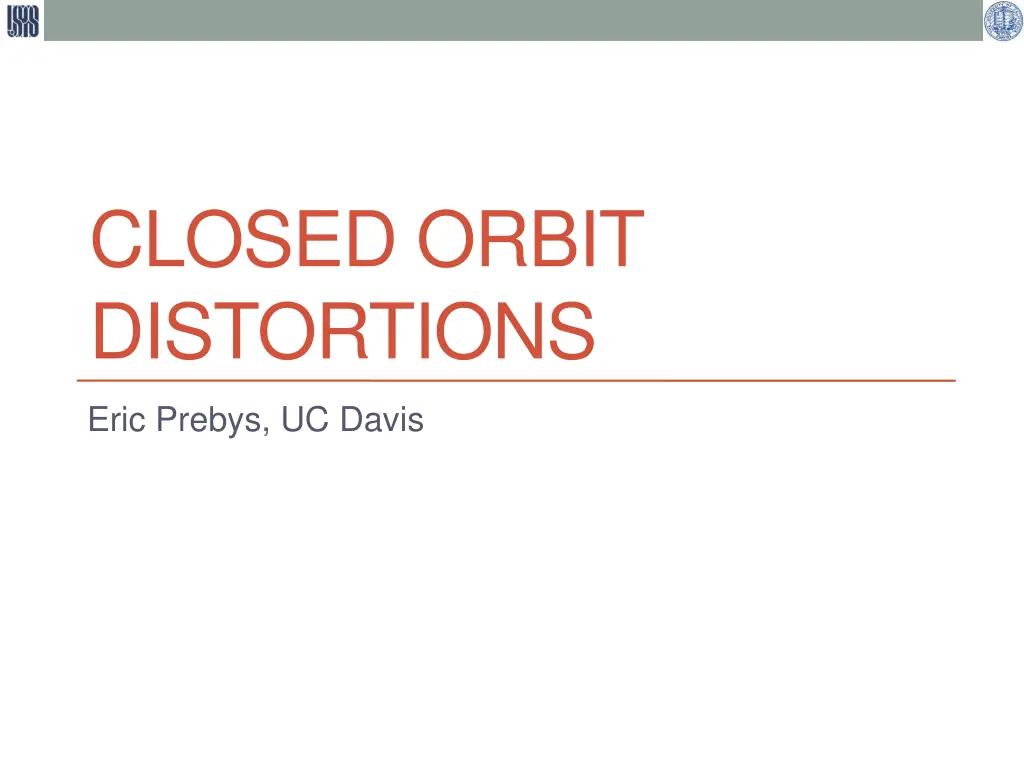
Understanding Closed Orbit Distortions in Accelerators
Explore the impact of small perturbations like dipole distortions in closed orbits within accelerator systems. Learn about the implications of misaligned quadrupoles and delve into correction techniques for maintaining orbit stability and accuracy.
Download Presentation

Please find below an Image/Link to download the presentation.
The content on the website is provided AS IS for your information and personal use only. It may not be sold, licensed, or shared on other websites without obtaining consent from the author. If you encounter any issues during the download, it is possible that the publisher has removed the file from their server.
You are allowed to download the files provided on this website for personal or commercial use, subject to the condition that they are used lawfully. All files are the property of their respective owners.
The content on the website is provided AS IS for your information and personal use only. It may not be sold, licensed, or shared on other websites without obtaining consent from the author.
E N D
Presentation Transcript
CLOSED ORBIT DISTORTIONS Eric Prebys, UC Davis
2 USPAS Fundamentals, June 4-15, 2018 E. Prebys, Accelerator Fundamentals: Closed Orbit Distortions Closed Orbit Distortion We have considered the effect of a small quadrupole perturbation We will now discuss effect of a small dipole perturbation, which is generally referred to as a closed orbit distortion Note that a misaligned quadrupole has the same effect as the addition of a small dipole term.
3 USPAS Fundamentals, June 4-15, 2018 E. Prebys, Accelerator Fundamentals: Closed Orbit Distortions Closed Orbit Distortion ( cusp ) We place a dipole at one point in a ring which bends the beam by an amount . The new equilibrium orbit will be defined by a trajectory which goes once around the ring, through the dipole, and then returns to its exact initial conditions. That is 0 x 0 0 x x x ( ) 0 0 0 + = = M I M 0 0 x x x 0 ( ) 1 0 = I M 0 x Recall that we can express the transfer matrix for a complete revolution as ( ( 1 2sinpnJe-Jpn= 1 2sinpn 1 2sinpn =Icos2pn+Jsin2pn =eJ2pn cos2pn+a(s)sin2pn -g(s)sin2pn )=1-eJ2pn=eJpne-Jpn-eJpn -1= -2sinpnJ ( b(s)sin2pn cos2pn -a(s)sin2pn )=-eJpn2sinpnJ M(s+C,s)= ( ( ( ) I-M ) ) ) -1 -1eJpn J I-M 1 ( ) = 2sinpnJ Icospn-Jsinpn ) = 2 J I ( 1 = J J = Jcospn+Isinpn acospn+sinpn -gcospn bcospn -acospn+sinpn = ? ? ?
4 USPAS Fundamentals, June 4-15, 2018 E. Prebys, Accelerator Fundamentals: Closed Orbit Distortions Plug this back in cos + cos cos sin cos 0 x 1 0 = 0 + sin x 2 sin cos 0 cos 0 = sin 2 sin We now propagate this around the ring b(s) b0 ( ) cosDy +a0sinDy b0b(s)sinDy = b0cospn sinpn -a0cospn q x(s) x (s) 2sinpn b0 b(s) 1 ( ) ( )cosDy - 1+a0a(s) ( )sinDy ( ) a0-a(s) cosDy -a(s)sinDy b0b(s) q b(s) b0 ( )b0cospn + b0b(s)sinDy sinpn -a0cospn ( ) x(s)= cosDy +a0sinDy 2sinpn =q b0b(s) 2sinpn =q b0b(s) 2sinpn ( ) cosDy cospn +sinDy cospn cos Dy -pn ( )
5 USPAS Fundamentals, June 4-15, 2018 E. Prebys, Accelerator Fundamentals: Closed Orbit Distortions Local Correction Recall our generic transfer matrix b1 b0 ( ) cosDy +a0sinDy b0b1sinDy = x1 x1 x0 x0 b0 b1 1 ( ) ( )cosDy - 1+a0a1 ( )sinDy ( ) a0-a1 cosDy -a1sinDy b0b1 If we use a dipole to introduce a small bend at one point, it will in general propagate as b(s) b0 ( ) cosDy +a0sinDy b0b(s)sinDy = x(Dy) x (Dy) 0 q b0 b(s) 1 ( ) ( )cosDy - 1+a0a(s) ( )sinDy ( ) a0-a(s) cosDy -a(s)sinDy b0b(s) x(Dy)=q b0b(s)sinDy b0 b(s) Remember this one forever ( ) x (Dy)=q cosDy -a(s)sinDy
6 USPAS Fundamentals, June 4-15, 2018 E. Prebys, Accelerator Fundamentals: Closed Orbit Distortions Three Bump Consider a particle going down a beam line. By using a combination of three magnets, we can localize the beam motion to one area of the line 2 12 1 23 2, 3 2 y13=y12+y23 3, 1, We require 3 1 Local Bumps are an extremely powerful tool in beam tuning!! x3=q1b1b3siny13+q2b2b3siny23=0 b1 b2 siny23 siny13 q2=-q1 b1 b3 b2 b3 ( )+q2 ( ) Cancel out angle from first two bends q3=- q1 cosy13-a3siny13 cosy23-a3siny23 b1 b3 b1 b2 siny13 siny23 b2 b3 ( )- ( ) =-q1 cosy13-a3siny13 cosy23-a3siny23 sin y23-y13 ( siny23 ) b1 b3 cosy13-siny13 b1 b3 siny23cosy13-cosy23siny13 siny23 b1 b3 =-q1 cosy23 =-q =-q1 siny23 b1 b3 siny12 siny23 q3=q1
7 USPAS Fundamentals, June 4-15, 2018 E. Prebys, Accelerator Fundamentals: Closed Orbit Distortions Controls Example From Fermilab Acnet control system The B:xxxx labels indicate individual trim magnet power supplies in the Fermilab Booster Defining a MULT: N will group the N following magnet power supplies Placing the mouse over them and turning a knob on the control panel will increment the individual currents according to the ratios shown in green

